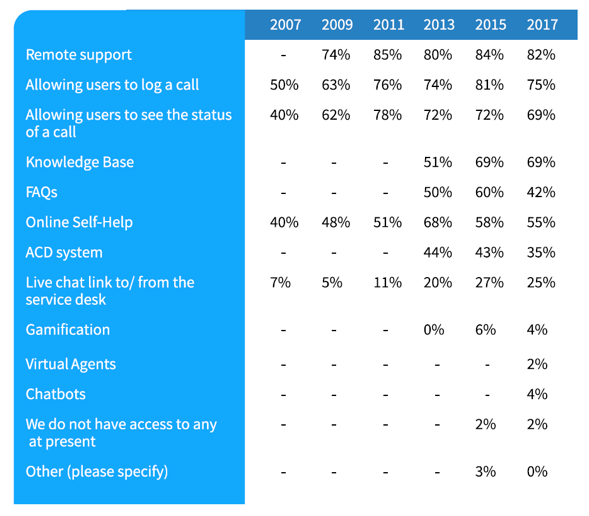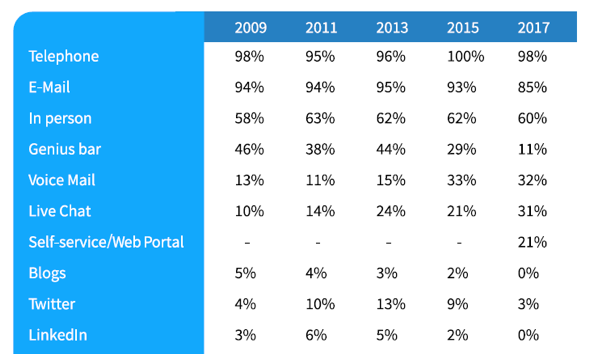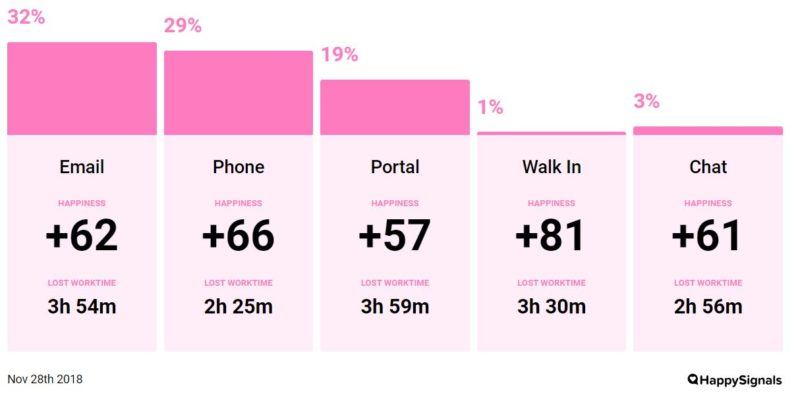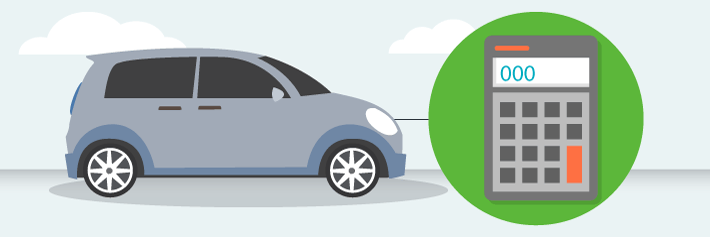
The Changing Landscape of IT Service Desk Contact Channels
Once upon a time, there were only a few ways employees could get IT help. They could phone a help desk number, hoping to get a person rather than a voicemail account (and even then, this might have only been to log their issue). They could send an email, but the available IT support personnel might have been too busy fixing things, and answering the phone, to check the email inbox regularly. Or they could track down a “friendly” IT support person and charm them into looking at their issue.
It was no way to provide IT support. Not compared to the quality of support offered today, thanks to IT service management (ITSM) best practices and fit-for-purpose IT service desk and ITSM tools. And, in terms of the latter, it’s interesting to see how the mechanisms available to, and used by, employees to contact IT support have changed (since the days of IT help desks) and will continue to change.
Please read on to find out more about the changing IT service desk contact channel landscape and what you can do to improve your organization’s channels.
The Most Popular IT-Support Technologies (Over the Last Decade)
Let’s start with the use of technology for IT support, regardless of use case. The Service Desk Institute (SDI) Service Desk Benchmarking Report 2017 shows that the technologies/capabilities employed by UK-based IT service desks have changed little over the last five years bar the growth in knowledge bases (see below).
Which of the following tools and technologies do you currently have access to?

Source: SDI, Service Desk Benchmarking Report 2017
It’s probably not what you expected – with some uptake percentages still relatively low. Plus, remember that these statistics relate to the technologies/capabilities employed by IT service desks, not necessarily to those that are regularly used by end users.
Wouldn’t you have expected to see more IT service desks increasingly using more technologies to assist with IT support? Especially in the UK given that it’s considered a relatively mature ITSM nation.
Picking out the contact channels within the list, there’s a wide spectrum of channel use levels represented:
- Self-service (“allowing users to log a call,” “allowing users to see the status of a call,” “knowledge base” (if customer facing), “FAQs,” and “online self-help”)
- Telephone – the automatic call distribution (ACD) system
- Live chat
- Virtual assistants/chatbots
And to quote SDI’s view on their survey data: “… we can see that there have been no increases in the adoption of any tools and technologies except Chatbots and Virtual Agents, which were new options added in 2017. Most tools and technologies have seen a slight decrease in percentage or remained the same.”
This small level of chatbot/virtual agent adoption is the start of the anticipated growth in the use of artificial intelligence (AI) and machine learning to augment the IT service desk’s human, and existing automation, capabilities. This will be returned to later.
An IT Service Desk Contact-Channel View
The same SDI survey and report also looked specifically at the contact channels used by customers/end users (see below).
What methods do your customers use to contact the service desk?

Source: SDI, Service Desk Benchmarking Report 2017
There are a number of observations to make:
- Telephone is still the most popular channel (in terms of use)
- The drop in the use of email is significant, which SDI describes as having: “…dropped by 8% since 2015 and, notably, has dropped to below 90% for the first time since the initiation of this survey”
- The “walk up” channel usage levels remains static
- There’s a continued drop in “Genius Bar” use – with it now at one quarter of its 2013 level
- There’s growth in voicemail use – which harks back to the pre-IT-service-desk days this blog opened with – but this of course could now be for out-of-hours service in non-24×7 IT service desks
- There’s growth in live chat use, which SDI describes as having: “…significantly increased by 10% since 2015 and 21% since the initiation of this survey”
- There’s a low level of self-service use, although this is thought not to be representative due to a survey question presentation error. A more realistic level based on other SDI surveys is 70-80%
- Social support is definitely “dead in the water” following its 2013 heyday.
It should be noted, though, that these percentages state that a channel is used by the users of the surveyed service desks rather than it’s being used in significant volumes. This is covered next.
Digging Deeper into IT Service Desk Channel Success Levels
The SDI data gives a great overview of channel popularity, albeit for a mostly UK sample. Another great statistics source, https://happysignals.com/happiness-score/, provides global channel-use data (see below) based on a rolling six-month sample of over 270k end-user feedback submissions.

And while the pink percentages at the top relate to the channel initially used by the feedback providers (so a sample of the overall incident ticket population), it can be considered similar to the population as a whole.
The usage-volume data shows that:
- Self-service has still to reach the levels of the much older telephone and email channels
- Chat is a long way behind self-service in terms of newer IT service desk channel adoption – and it doesn’t bode well for the introduction of chatbots
- Walk-up usage is minimal despite it offering the best customer experience
The lack of self-service uptake could be explained by the low level of end-user happiness with the channels (the lowest of all the channels even though it’s quicker, resolution-wise, than the email channel). However, the reason for the lack of chat take up is unclear – especially because end users are happier with chat than they are with email, plus they lose less productivity. Although potential causes could be the lack of promotion of the channel, the difficulty of accessing the chat capabilities, and the overall chat process (in terms of the effort required versus emailing and calling in particular).
6 Tips for Influencing the Demand for Your IT Service Desk’s Channels
Your IT service desk hopefully offers a variety of contact channels. If it doesn’t, then it probably isn’t meeting end user expectations of support provision in 2018.
But does your IT service desk have an imbalance of channel use versus what it would ideally like (in terms of being able to deliver a better overall level of service)? If so, then please consider employing the following 6 tips:
- Understand that trying to force end users to use a particular contact channel won’t work (the caveat being where the organizational culture is dictatorial). Instead, it will probably just prevent end users asking for help (and potentially cause business issues).
- Recognize that end users will choose to use the contact channel that’s easiest for them (and delivers the required solution based on needs). So, if a quick resolution is needed, then a call will be made. If there’s no time to spend 10+ minutes on a call, then a 60 second email is probably preferred. Thus, to encourage self-service and chat use, there’s a need to understand how these services need to meet end-user expectations around ease of use and immediacy.
- Market the benefits of newer channels better – the “What’s in it for me?” of organizational change management as well as general awareness.
- Understand that new channels are more than the introduction of new technologies. Instead, they need to be handled as per the introduction of any other new way of working (it’s organizational change management again).
- Measure the relative performance of each channel to identify ways in which to improve the end-user experience. The Happy Signals data is a great example:
- Is usage low? Understand why and start to address the issue(s).
- Are end users unhappy with the experience they receive? Understand why and start to address the issue(s).
- Is the offered solution delivered later than what the end user expects? Understand why and start to address the issue(s).
- If your IT service desk is introducing a chatbot channel, ensure that you have succeeded with self-service, chat, and knowledge management first. If you don’t, you’ll end up will another contact channel that end users choose not to use.
This tip list is in no way exhaustive, but hopefully it will get you thinking about your current and future IT service desk contact channels. If you have succeeded with self-service, chat, or chatbots – what did you do to make them work? Please let me know in the comments.






